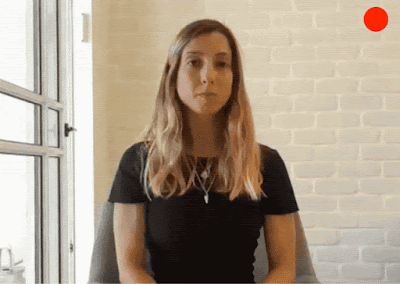Research happens at Google everyday, on many different embedded teams throughout the company. For example, Amit Moryossef developed a machine learning model for sign language detection while interning this year with our Language team in Zurich. Since our 2021 Research Internship applications opened this month, Amit chatted with us to discuss what his experience has been like.
How did you end up pursuing research around sign language processing?
After finishing college, I started a master’s degree in computer science at Bar-Ilan University. While I was there, I was introduced to deep learning, and to doing research. I worked on natural language processing, specifically looking at text generation and gender bias in machine translation. I planned for those years to be my final years in an academic setting, and then I’d go into the workforce.
Everything changed, surprisingly, after I watched the 2019 Eurovision Song Contest. They had sign-language interpretations of the songs. I realized how much of the world is not built to be accessible to the Deaf and hard of hearing communities, and this led to a bit of a shift in my plans.
Today I’m doing a PhD in computer science, working on sign language processing with the hope of making the world more accessible. This is also the topic of research I worked on at Google during my internship.
Why did you apply for an internship at Google?
Google always seemed to me like a great place to work — a place that would have all of the resources I could ever need, both computationally and personally. I applied to Google with the honest belief that this is the best place for me to do research on what I am passionate about, and make that research available to everyone.
How did the ongoing pandemic affect your internship?
In March, I was still in denial that this would affect me, and I was hoping the internship would go as planned. In April, I received the message saying the internship would move to a virtual model which was initially disappointing on a personal level, but made sense as the world was going deeper into lockdown.
The remote nature of the internship introduced new challenges. Having a supportive manager and caring recruiter were some of the key factors for me in dealing with some of these challenges successfully—helping me get assistance with unfamiliar tools, fostering relationships with new colleagues and helping me to create and maintain a work-life balance.
What project was your internship focused on?
My internship project was about sign language detection for video conferencing applications. This task is simply defined as to detect when someone uses sign language on a video call, and set them as the current “speaker” of that call, just like a person using their voice would be. This work goes hand in hand with my PhD research—making the world more accessible to people who use sign language.

Maayan Gazuli, an Israeli Sign Language interpreter, demonstrates the sign language detection system.
What was the outcome of your internship?
We designed the sign-language detection model and built an application that runs this on-device, and works with all video-conferencing applications. This means we empower signers to use whichever video conferencing applications they would like, and our system should work just as well.
We published and presented a long paper in the SLRTP workshop, as well as an academic demo and a Google AI blog post. You can try our experimental demo right now! By default, the demo acts as a sign language detector. The training code and models as well as the web demo source code is available on GitHub.
What impact has this internship experience had on your research?
I learned how to better communicate and work with folks who were previously unaware of my research and how to operate within a large organization (compared to academia).
My experience showed me the practical application of my research, and that it is possible to change the world for the better.
